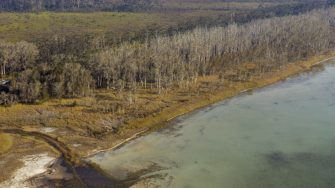
About the Smiths Lake Field Station
The Smiths Lake Field Station is located on the shore of Smiths Lake in the Myall Lakes National Park, roughly 100 km north of Newcastle. The station is used by UNSW Biological, Earth & Environmental Sciences as a research and teaching zone, allowing students to study coastal and marine ecosystems. Other groups within the university and local communities can also access the station for their own research and teaching purposes.
Since 2003, Smiths Lake Field Station has accommodated 3000 students each year. Today, it’s in the trusteeship of UNSW for the promotion of the study and preservation of native flora and fauna. Students undertaking a course with UNSW Biological, Earth & Environmental Sciences may conduct fieldwork at the station as part of their study.
Lodge a booking request
Complete the Smiths Lake Field Station booking form and email completed forms to the Smiths Lake admin team.
Please note, non-UNSW bookings only available for approved groups, where the activity contributes to the preservation of flora and fauna.
User guide
The user guide contains detailed information about the station, and includes the sign-off sheets and safety documentation.
Available Habitats
The Smiths Field Lake Station is an extension of the Myall Lakes National Park. The lake comprises of three zones: a general use zone, a habitat protection zone and a special research zone adjacent to the field station. Smiths Lake is a saltwater lake, which periodically opens to the sea and varies in salinity from 20–35ppt. The neighbouring coastline offers sandy surf beaches with rocky headlands and a range of lakes varying from almost freshwater in the upper lakes to saline conditions in the lower lakes and Karuah estuary.
North of Smiths Lake is Wallis Lake, an extensive system on the estuary of Wallingat. Adjacent terrestrial habitats include vast tracts of sandy coastal heath, swamps, sclerophyll and rainforests. Over the past 30 years, sand mining activity and subsequent rehabilitation programs have provided an additional range of habitats in various stages of regeneration.
Extra information for UNSW Staff and Students
Please visit the BEES Intranet Page for more information.
